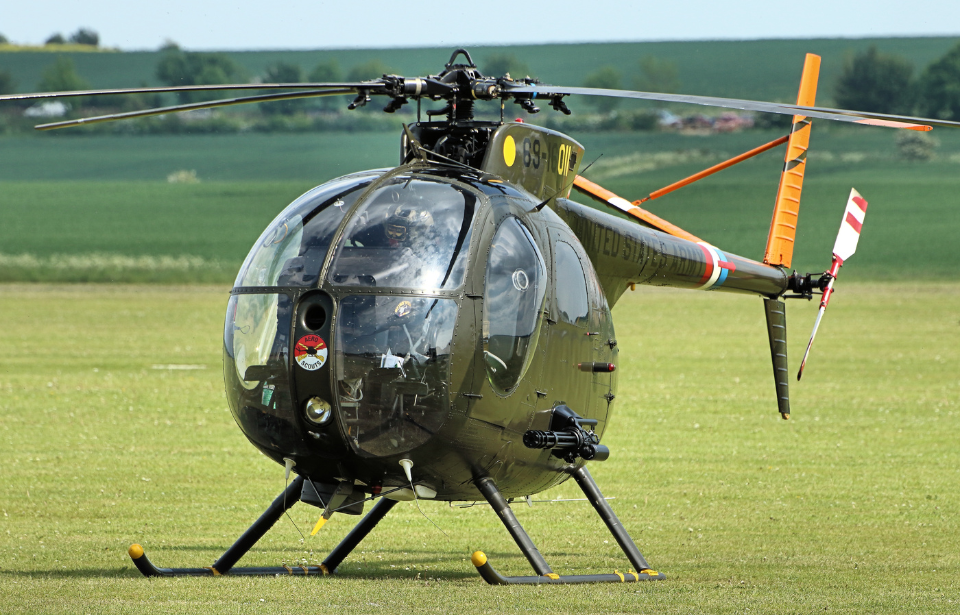The Hughes OH-6 Cayuse was a revolutionary rotorcraft operated during the Vietnam War. Adopted after the company behind its design deceived the US Army, the “Loach” helicopter, as it was better known, fast became the primary chopper flown in Vietnam. Almost as soon as production began, however, it was replaced by a competitor’s model.
Battling it out for a US Army contract
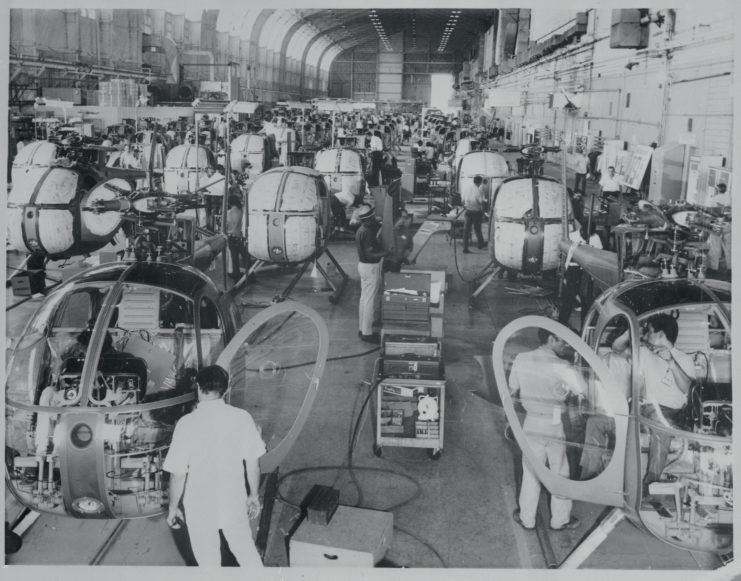
Following the Second World War, significant advancements were made in the field of rotary-wing flight. The Korean War proved the necessity for such rotorcraft, particularly in regard to search and rescue operations.
In 1960, the US Army issued Technical Specification 153 and established the Light Observation Helicopter (LOH) program. This eventually gave way to the “loach” nickname, and was intended to provide the US military with a light-class, rotary-wing craft that could fulfill a number of purposes: search and rescue, close air support, MEDEVAC, observation, transport, reconnaissance and attack roles.
The LOH program opened the floor to several companies to come up with their own designs. The Aircraft Division of Hughes Tool Company came up with the Model 369, which became one of three finalists, alongside designs from Bell Helicopter Company and Fairchild Hiller.
The Model 369, with its Allison T63-A-5A series turboshaft engine, took its first flight on February 27, 1963, under the military designation YOH-6A. During the testing phase, it became clear the Bell prototype was underpowered, so it was dropped. Up against Fairchild Hiller, Hughes Tool Company purposely undervalued its cost estimates, earning the company favor – and the contract.
The Army requested 714 helicopters in May 1965, a number that was later increased to 1,300.
Hughes OH-6 Cayuse specs
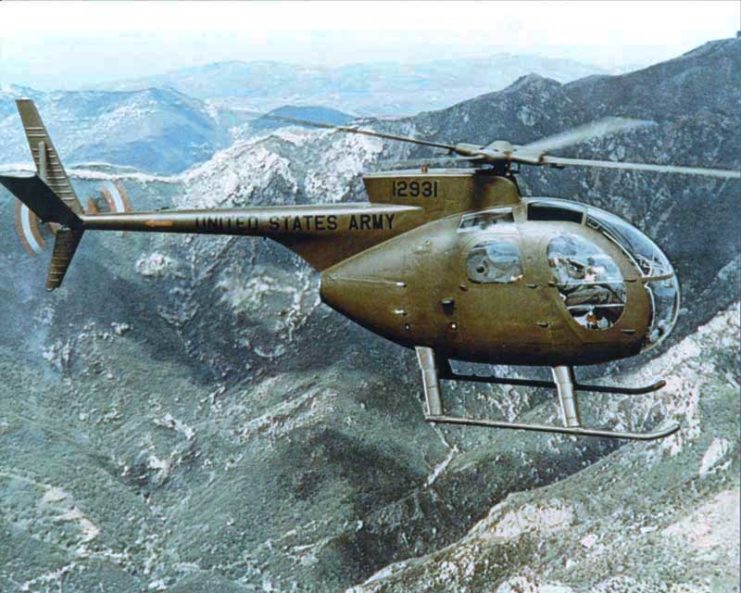
The OH-6 Cayuse was built with a rugged structure covered in light aluminum. It had a distinct teardrop-shaped fuselage, which made it instantly recognizable, and a cockpit for two crew members, along with two removable seats in the passenger cabin. It was also the right size to fit the necessary avionics and fuel stores, all while keeping the structure nimble and agile.
Overtop of the fuselage was the OH-6’s single engine, attached to a four-blade main rotor assembly. A shaft ran to the tail and powered the two-blade rotor at the back. Underneath, a fixed twin-skid undercarriage was supported at two separate points.
This simple design made maintenance easy, while the chopper’s 26-foot rotor made it much easier to maneuver in tight landing zones. As well, its tough frame made it safer than other helicopters during crashes, as its aluminum skin absorbed the energy and the structure protected the crew.
With all these benefits, several variations were developed.
Flying the Hughes OH-6 Cayuse over Vietnam
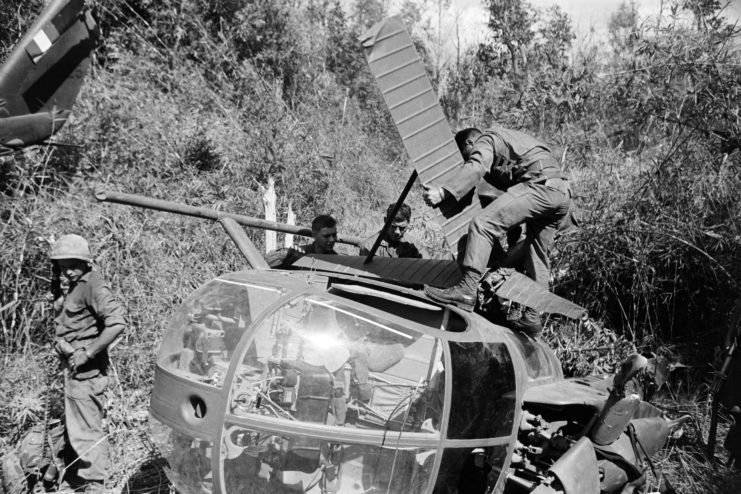
The OH-6 Cayuse, by this point known as the Loach helicopter, made its way to Vietnam in December 1967. Its effectiveness in battle allowed it to quickly replace the Bell H-13 Siouxs being operated in the country. Each could be equipped with any number of armaments, including grenade launchers, 7.62 mm miniguns, Hydra 70 mm unguided rockets, and TOW and Hellfire anti-tank guided missiles.
While in Vietnam, Loach helicopters operated as part of air mobile teams. They were employed in hunter-killer tactics, wherein they flew low over the jungle as bait to draw enemy fire. When the opposing forces exposed themselves, the crew would call upon an accompanying Bell AH-1 Cobra to attack. Infantrymen would also launch an assault from the ground.
While successful in this respect, the Loach helicopter also had a reputation for being easily gunned down. However, the chopper’s frame ensured the crewmen within remained safe. That’s why the majority of pilots who served in Vietnam shared the opinion that, if you were going to crash, it was best to do it in a Loach.
Hughes Tool Company loses its contract
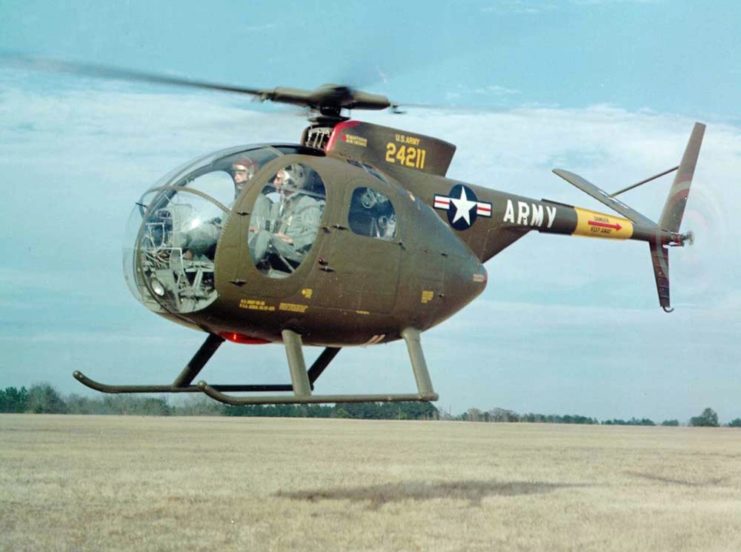
While the already-produced OH-6 Cayuses were being deployed to Vietnam in 1967, production costs were beginning to rise. On top of this, Fairchild Hiller lodged a formal complaint over Hughes Tool Company’s deceitful tactics to earn the original contract.
The US Army subsequently reopened the LOH program to engineering companies, offering a new contract for 2,700 additional airframes. Another flight competition was held, this time without a submission from Fairchild Hiller. The Loach helicopter was pitted against what was then known as the Bell Model 206.
In the end, Hughes lost its contract to Bell, who was deemed to have the superior design. The Army officially adopted the Bell OH-58 Kiowa in 1969.
Kawasaki OH-6D
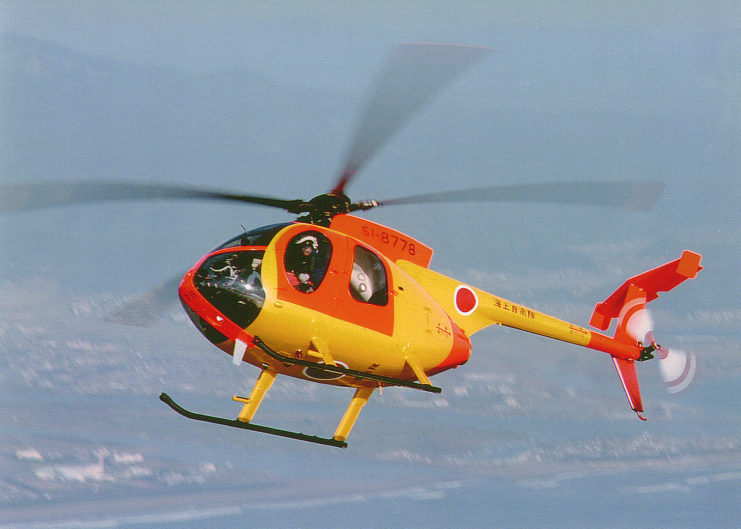
Kawasaki Heavy Industries produced 387 OH-6D Cayuses under license in Japan. They were operated by a number of military organizations, including the Japanese Army, Navy and Coast Guard. Several Kawasaki-built Loach helicopters were also flown by civilian customers for a variety of reasons, including emergency medical services, law enforcement tasks and for work in the agricultural sector.
160th Aviation Battalion
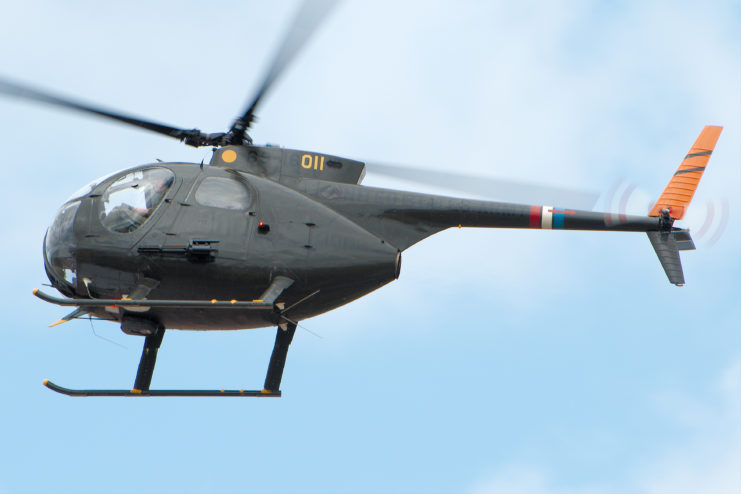
When the 1980 hostage situation of Operation Eagle Claw was deemed a disaster, the US military realized there was a lack of aircraft and personnel trained for such special operations. In response, a task force was developed – originally designated Task Force 158 – for the next attempt to rescue the hostages, Operation Honey Badger.
For this, a small rotorcraft capable of landing in restrictive locations and easily transportable via US Air Force transport aircraft was necessary. The OH-6A Cayuse fulfilled this role and became known as the “Little Bird.” The pilots tasked with operating the choppers were selected from the 229th Attack Helicopter Battalion. They underwent two weeks of qualification training and an additional two weeks of mission training.
More from us: The US Air Force Panicked When Its Top-Secret Stealth Fighter Crashed Into the California Wilderness
Operation Honey Badger never went ahead, as the hostages were released in January 1981. Instead of disbanding Task Force 158, the military opted to turn it into the 160th Aviation Battalion. The Loach helicopters used to transport personnel were given the designation MH-6, while the armed ones were dubbed the AH-6.
